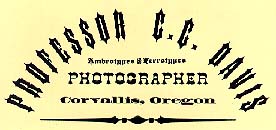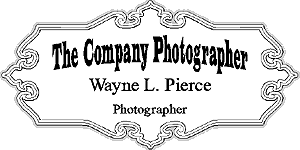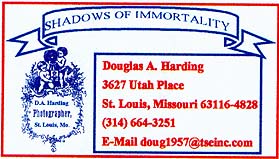 |
||||||
Today's Practitioners of Wetplate
Collodion Photography |
||||||
Group workshops here at the George Eastman House International Museum of Photography. These are good for those who want a chance to see the process and a first hands-on experience. Collectors, historians, art photographers, reenactors and museum curators all take these classes. The two day class includes seeing the collection of original equipment, history of the process, conservation and housing of antique images and hands-on Ambrotype making, plus a full workbook covering history, conservation and a manual with formulas and sources. The manual is the most detailed information on the subject written in modern language at this time. Interested parties can also make special arrangements to arrive on a Friday and see any original prints from the collection, including Civil War prints, and work by Nadar, Cameron, Fenton etc. We work in all the 19th century formats including 18x20 mammoth plates, stereo, panotypes, Ambrotype, negatives, opaltypes, salt printing and positive transparencies. The next workshop will be in March. Use the email link above for information. For the most serious would-be collodion photographer or the beginner who wants to troubleshoot their technique, we also do occasional private tutorials at our studio when we have the time. Our studio has an advantage, because we have a ventilated darkroom with room for two to work at a time, or one to work and room for four watch. We can show you what to look for and when to act. We also have several original cameras in sizes from 1/9 plate to 22" including stereo and shifting multi-lens for multiple tin types. John has 16 years experience in Wet-plate Photography. He is considered the father of the wet-plate collodion revival. John holds workshops in the wet-plate art at his 19th century farmstead. He also does private tutoring and takes on apprentices from time to time. Two of the better know wet-plate artists in reenacting, Claude Levet and Bill Dunniway, got their initial start under John's tutelage. Use the above link to read about his 1999 workshops. For a review of a previous workshop use the link below to Fritz Kirsch's page. William Dunniway is a very talented Wetplate artist and a visit to his website with the above link will be well worth your time. He has some very nice work on display there.
I live in St. Louis and have been reenacting for 22 years. I first got bit by the silver nitrate bug in 1979 when John Coffer spent a week in St. Louis on his way to California. In 1995 I took the workshop at the George Eastman House in Rochester under Mark Osterman. It's been a slow process getting all the equipment and chemicals together and I am finding how really difficult it is to get things to work. I hope to be able to achieve consistent results under the same field conditions that our predecessors had to endure before I'm too old to go to events. My goal is to become at least half as good as Claude Levet.
|







